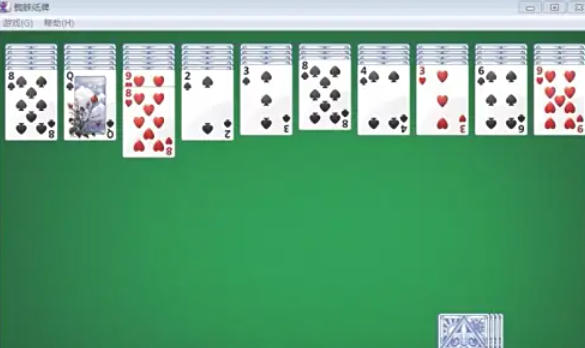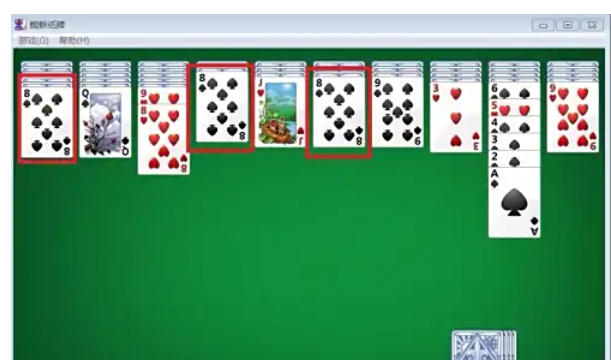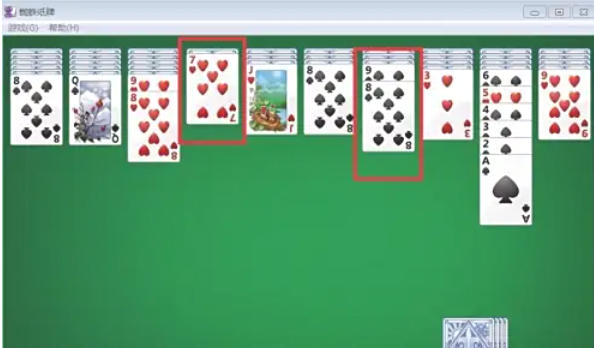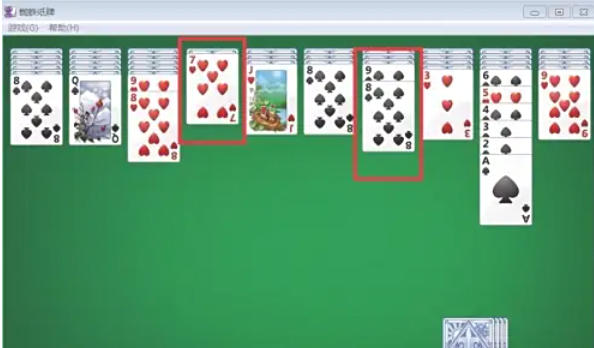Spider Solitaire is a classic built-in single-player strategy card game that uses two decks of playing cards (104 cards) to build complex card games. Players need to arrange the cards of the same suit into a complete sequence from K to A in descending order by moving and combining the cards and eliminate them. The game provides three difficulty modes: single color, two colors and four colors, which test players' overall planning, logical reasoning and risk prediction abilities - they need to use empty columns as a transfer station carefully, coordinate multi-column operations and accurately grasp the timing of the flop. Its rules are simple but contain infinite strategic depth. It can both relax and exercise your thinking. It is an enduring model of intellectual games in the digital age. Next, let the editor of Huajun explain to you how to solve Spider Solitaire levels and how to solve Spider Solitaire levels!
first step
Prioritize moving one-way sequence
Goal: Quickly release hidden cards in the deck to increase operating space.
Example:
Movement 8→9 (single card connection) has higher priority than movement 2→3→4 (short sequence), as the latter may block the movement path of other cards.
Advanced skills: If the one-way sequence can be extended to more than 3 cards (such as 5→6→7), give priority to retaining this type of sequence to prepare for subsequent combination moves.

Step 2
Trial and error using undo (Ctrl+Z)
Applicable scenarios: When moving multiple choice cards, verify the optimal solution through trial and error.
Operation steps:
Assume that there are three 8→9 options, move the first 8→9 first, and observe the subsequent changes in the game.
If it doesn't work (i.e. there are no new moveable cards), press Ctrl+Z to undo and try the second option.
Key point: After canceling, you need to observe the hidden cards under the moved cards (such as a 7 appearing under the second 8→9, which may trigger a chain move).

Step 3
Blank tablet (space) management
Function: The space is the "breathing space" of the game, which can temporarily store any cards and break the deadlock.
How to get it:
Move the King card to the empty pile (only if there are no other cards in the pile).
Opening strategy: Prioritize moving one-way sequences to free up 1-2 spaces to leave room for subsequent operations.

Step 4
Multi-step prediction and chain reaction
Example:
After moving 8→9, if J is exposed below, it can be predicted that the next move will be 10→J or Q→J.
Decision logic: Give priority to the option that can trigger the most subsequent moves (for example, 2 hidden cards can be released at the same time after moving).

Step 5
suit matching priority
Advanced Difficulty (4 Suits): It is necessary to plan the straights of the same suit in advance (such as ♠5→♠6→♠7), because straights of different suits cannot be merged into the basic deck.
Low level difficulty (1 suit): No need to consider the suit, just focus on the length of the sequence.

Step 6
Opening stage (0-3 minutes)
Goal: Quickly release hidden cards and establish operating space.

Operation:
Move all one-way sequences (e.g. 3→4, Q→K).
Make at least 1 space for key cards (such as K or A).

The above is the editor of Huajun who has compiled for you how to clear Spider Solitaire and the methods to clear Spider Solitaire. I hope it can help you!



